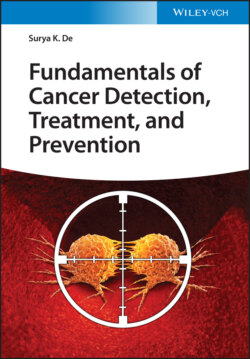Читать книгу Fundamentals of Cancer Detection, Treatment, and Prevention - Surya K. De - Страница 77
2.13.3 Acrylamide
ОглавлениеIt is a chemical mainly used to make substances called polyacrylamide and acrylamide copolymers, which are used in several types of industrial processes, including the production of paper, dyes, and plastic. They are also found in some consumer items like caulking and food packaging.
In addition, acrylamide is found in some foods. The main foods containing acrylamide are French fries and potato chips, crackers, bread, cookies, breakfast cereals, canned black olives, prune juice, and coffee. It can be created when vegetables that contain the amino acid asparagine are heated to high temperatures in the presence of certain sugars. The browning of meat generates acrylamide as a byproduct of the chemical reaction called the Maillard reaction, which occurs during the browning process (Figure 2.18) between asparagine and reducing sugar [123–126]. The carbonyl group of the sugar reacts with the amino group of the amino acid to form an N‐substituted glycosylamine, which undergoes Amadori rearrangement to produce a ketosamine. The open‐chain ketosamine further undergoes dehydration and deamination steps to give a reactive dicarbonyl compound. This dicarbonyl reacts with an asparagine to produce a Schiff base, which further degrades through Maillard reaction to produce toxic acrylamide (Scheme Scheme 2.1). Acrylamide can react with cysteine or lysine and damage normal DNA.
Figure 2.18 Browning of meat produces acrylamide and it can cause cancer.
Scheme 2.1 Formation of acrylamide, a byproduct of Maillard reaction between reducing sugars and amino acids.
Tobacco smoke from cigarettes, however, is a much more significant source of exposure to acrylamide than food.
In studies using rodent models, acrylamide exposure was linked to an increased risk of developing several types of cancer [107–117]. According to the National Toxicology Program's Report on Carcinogens, acrylamide is likely carcinogenic based on its effect in laboratory animals given drinking water contaminated with this compound. More studies, however, need to be done to find out the levels and length of exposure required to affect humans.
Certain occupations involve more employee contact with cancer‐causing substances. Some workers are exposed daily. A few occupations at higher risk include aluminum workers, painters, tar pavers (who are exposed to carcinogenic benzene), rubber and plastic manufacturers, hairdressers, and manicurists in nail salons.
